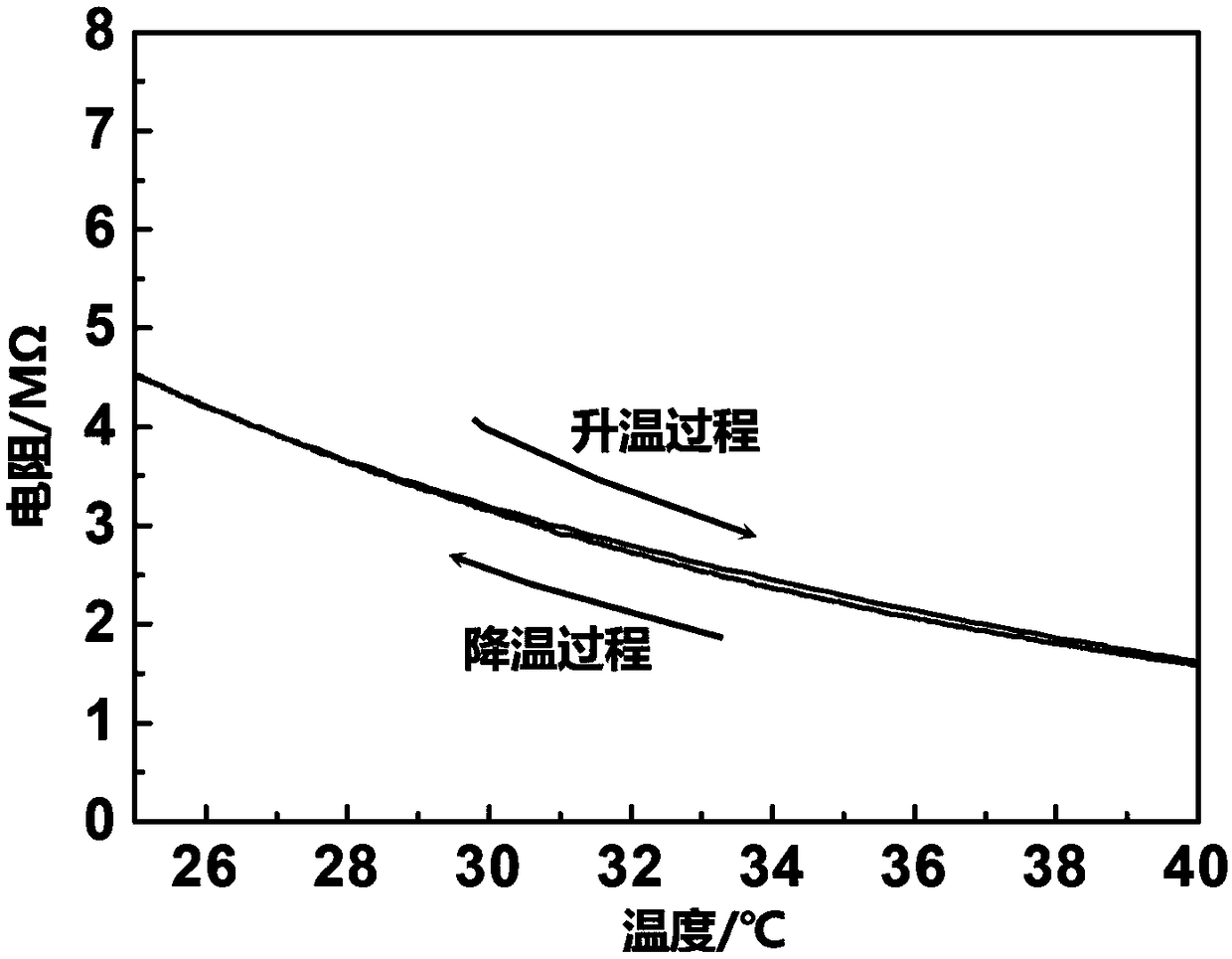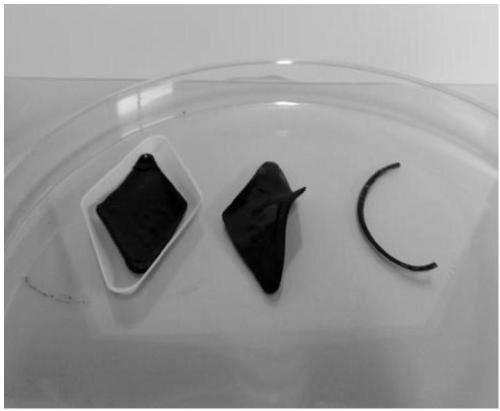Preparation method of temperature sensitive poly(N-isopropyl acrylamide)/graphene composite material
A technology of isopropyl acrylamide and composite materials, which is applied in the field of preparation of temperature-sensitive poly/graphene composite materials, can solve the problem of low sensitivity of temperature sensors, and achieve the effect suitable for large areas
- Summary
- Abstract
- Description
- Claims
- Application Information
AI Technical Summary
Problems solved by technology
Method used
Image
Examples
Embodiment 1
[0030] (1) Weigh 75g of 1mg / ml graphene oxide aqueous solution, use 5%wt sodium carbonate solution to adjust the pH to 9, take 600mg of sodium borohydride and dissolve it in 15g deionized water, add the sodium borohydride aqueous solution to the oxide In the graphene aqueous solution, stir continuously at 80° C. for 1 h. After the reaction is completed, centrifuge and wash with deionized water for 3 times, and disperse into 75 g of water again. Weigh and mix 46mg sulfanilic acid, 18mg sodium nitrite, 0.5g 1M hydrochloric acid, 10g deionized water, add the mixed solution to the pre-reduced graphene oxide aqueous dispersion, stir continuously in an ice-water bath for 2h, and the reaction ends Afterwards, it was centrifuged and washed 3 times with deionized water, and dispersed into 75 g of deionized water again. Weigh 3.125g of hydrazine hydrate and add it to the above-mentioned graphene aqueous solution for secondary reduction. Stir continuously at 100°C for 24 hours. After the...
Embodiment 2
[0036] (1) Weigh the 4mg / ml graphene oxide aqueous solution of 75g, use the sodium carbonate solution of 5%wt to adjust the pH to 10, get the sodium borohydride of 2.4g and dissolve it in 60g deionized water, add the sodium borohydride aqueous solution to In the graphene oxide aqueous solution, stir continuously at 80° C. for 1 h. After the reaction is completed, wash with deionized water for 3 times, and then disperse into 75 g of water again. Weigh and mix 92mg sulfanilic acid, 36mg sodium nitrite, 1g 1M hydrochloric acid, 20g deionized water, add the mixed solution to the pre-reduced graphene oxide aqueous dispersion, stir continuously in the ice-water bath for 2h, after the reaction , washed three times by centrifugation with deionized water, and dispersed in 75 g of deionized water again. Weigh 6.25g of hydrazine hydrate and add it to the above-mentioned graphene aqueous solution for secondary reduction. Stir continuously at 100°C for 24h. After the reaction is over, wash...
Embodiment 3
[0039] (1) Weigh 75g of 20mg / ml graphene oxide aqueous solution, use 5%wt sodium carbonate solution to adjust the pH to 11, take 12g of sodium borohydride and dissolve it in 300g deionized water, add the sodium borohydride aqueous solution to the oxide In the graphene aqueous solution, stir continuously at 80° C. for 1 h. After the reaction is completed, centrifuge and wash with deionized water for 3 times, and disperse into 75 g of water again. Weigh and mix 920mg sulfanilic acid, 360mg sodium nitrite, 10g 1M hydrochloric acid, 200g deionized water, add the mixed solution to the water dispersion of pre-reduced graphene oxide, stir continuously in an ice-water bath for 2h, after the reaction , washed three times by centrifugation with deionized water, and dispersed in 75 g of deionized water again. Weigh 62.5g of hydrazine hydrate and add it to the above-mentioned graphene aqueous solution for secondary reduction. Stir continuously at 100°C for 24h. After the reaction is over,...
PUM
 Login to View More
Login to View More Abstract
Description
Claims
Application Information
 Login to View More
Login to View More - R&D
- Intellectual Property
- Life Sciences
- Materials
- Tech Scout
- Unparalleled Data Quality
- Higher Quality Content
- 60% Fewer Hallucinations
Browse by: Latest US Patents, China's latest patents, Technical Efficacy Thesaurus, Application Domain, Technology Topic, Popular Technical Reports.
© 2025 PatSnap. All rights reserved.Legal|Privacy policy|Modern Slavery Act Transparency Statement|Sitemap|About US| Contact US: help@patsnap.com



